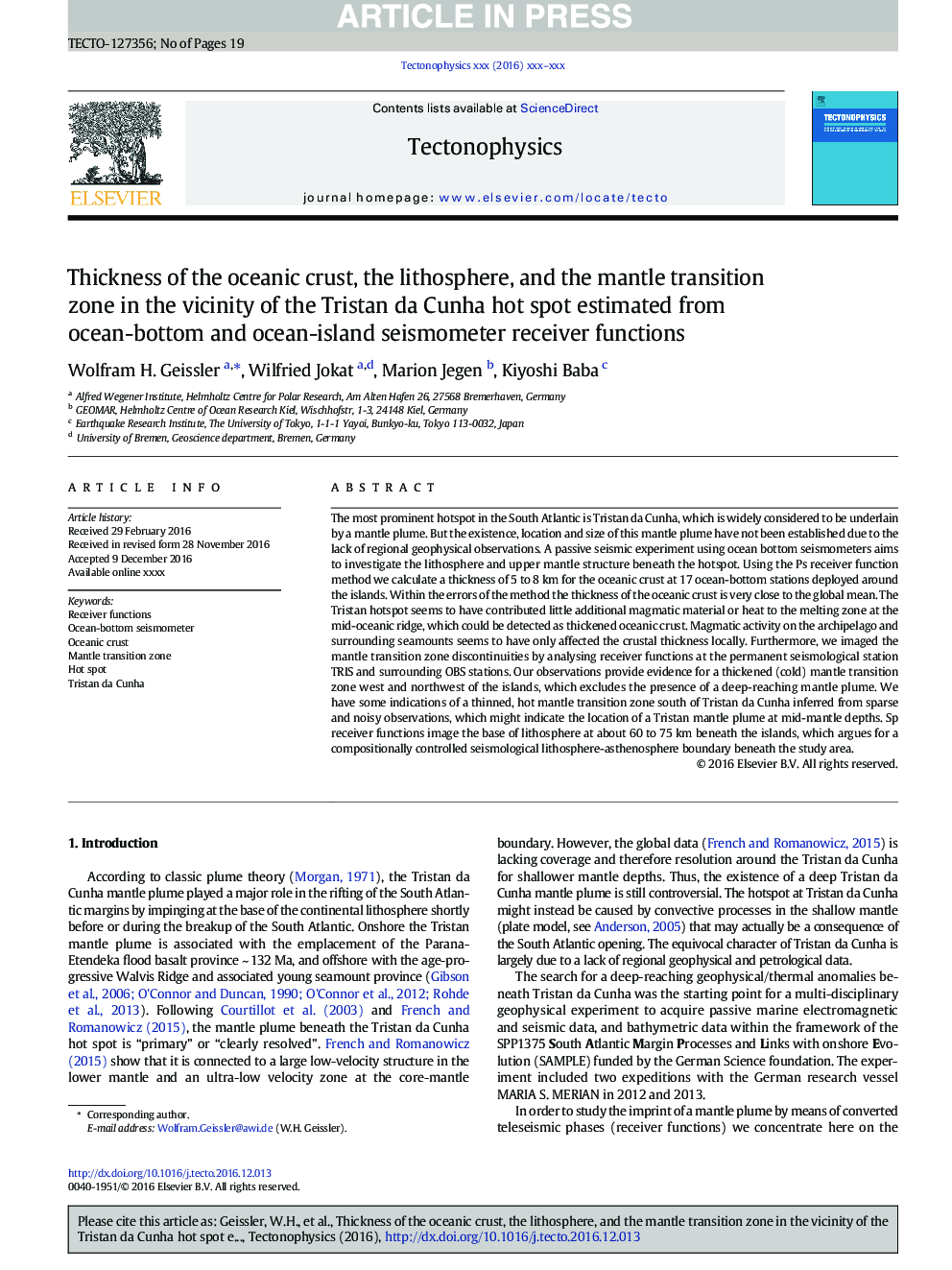| کد مقاله | کد نشریه | سال انتشار | مقاله انگلیسی | نسخه تمام متن |
|---|---|---|---|---|
| 8908909 | 1636692 | 2017 | 19 صفحه PDF | دانلود رایگان |
عنوان انگلیسی مقاله ISI
Thickness of the oceanic crust, the lithosphere, and the mantle transition zone in the vicinity of the Tristan da Cunha hot spot estimated from ocean-bottom and ocean-island seismometer receiver functions
دانلود مقاله + سفارش ترجمه
دانلود مقاله ISI انگلیسی
رایگان برای ایرانیان
کلمات کلیدی
موضوعات مرتبط
مهندسی و علوم پایه
علوم زمین و سیارات
فرآیندهای سطح زمین
پیش نمایش صفحه اول مقاله

چکیده انگلیسی
The most prominent hotspot in the South Atlantic is Tristan da Cunha, which is widely considered to be underlain by a mantle plume. But the existence, location and size of this mantle plume have not been established due to the lack of regional geophysical observations. A passive seismic experiment using ocean bottom seismometers aims to investigate the lithosphere and upper mantle structure beneath the hotspot. Using the Ps receiver function method we calculate a thickness of 5 to 8Â km for the oceanic crust at 17 ocean-bottom stations deployed around the islands. Within the errors of the method the thickness of the oceanic crust is very close to the global mean. The Tristan hotspot seems to have contributed little additional magmatic material or heat to the melting zone at the mid-oceanic ridge, which could be detected as thickened oceanic crust. Magmatic activity on the archipelago and surrounding seamounts seems to have only affected the crustal thickness locally. Furthermore, we imaged the mantle transition zone discontinuities by analysing receiver functions at the permanent seismological station TRIS and surrounding OBS stations. Our observations provide evidence for a thickened (cold) mantle transition zone west and northwest of the islands, which excludes the presence of a deep-reaching mantle plume. We have some indications of a thinned, hot mantle transition zone south of Tristan da Cunha inferred from sparse and noisy observations, which might indicate the location of a Tristan mantle plume at mid-mantle depths. Sp receiver functions image the base of lithosphere at about 60 to 75Â km beneath the islands, which argues for a compositionally controlled seismological lithosphere-asthenosphere boundary beneath the study area.
ناشر
Database: Elsevier - ScienceDirect (ساینس دایرکت)
Journal: Tectonophysics - Volume 716, 2 October 2017, Pages 33-51
Journal: Tectonophysics - Volume 716, 2 October 2017, Pages 33-51
نویسندگان
Wolfram H. Geissler, Wilfried Jokat, Marion Jegen, Kiyoshi Baba,